Did you know that the green tops of carrots are edible? It’s true! If you get a bunch of carrots with their greens still attached, don’t throw the greens in the trash! Save those fresh carrot tops and try this carrot leaves recipe for a delicious pesto. You’ll save money, reduce food waste, and have something tasty to show for your efforts!
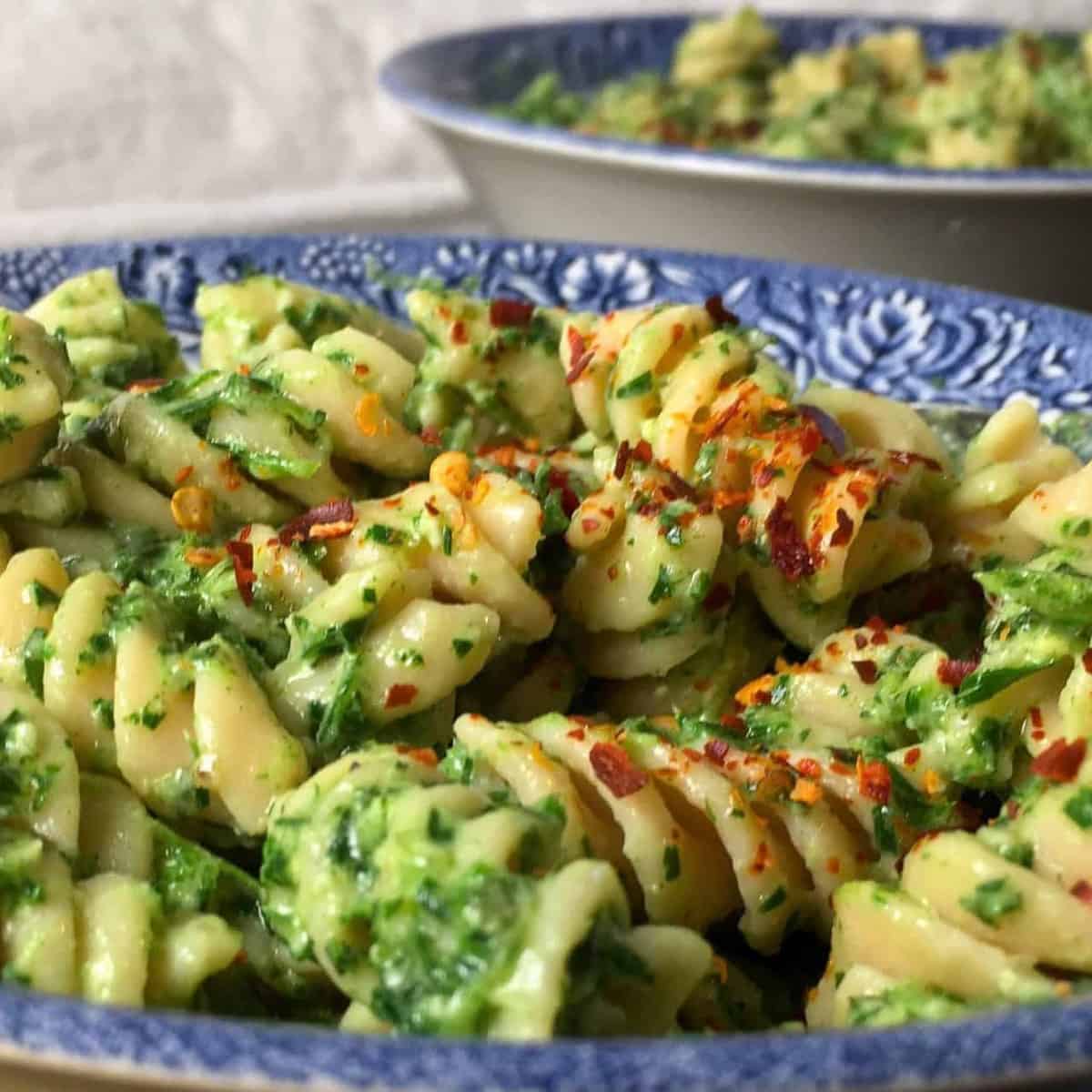
Want to save this post?
Enter your email below and we'll send it straight to your inbox. Plus you'll get great new recipes from us every week!
I’ve been on an extremely tight budget during certain periods of my life but have always managed to live well. One of the simplest ways I’ve found to reduce my grocery bill is to make use of everything that I have.
That means using any produce we buy before it spoils with good meal planning. I also make sure to squeeze as many meals as possible out of food that comes into the house.
For example, when I roast a whole chicken, I make sure to make bone broth before I throw the carcass away. When I have pears that are under-ripe or overly bruised I make them into a delicious applesauce substitute. And when I get my hands on fresh carrot greens, I eat them rather than throw them in the trash.
That’s right, carrot greens are edible. They are fairly bitter but if you blanch them first, they integrate well into many dishes. (P.S. Radish tops can be treated the same way!)
Here I’m offering up a tasty carrot leaves recipe for pesto. This pesto freezes well so you can use it in an assortment of dishes. Aside from using it on pasta, you can add it to roasted veggies, use it to dress salads, or spread it on grilled cheese.
You’re going to be so glad to have this pesto on hand as a flavor enhancer. It is delicious!
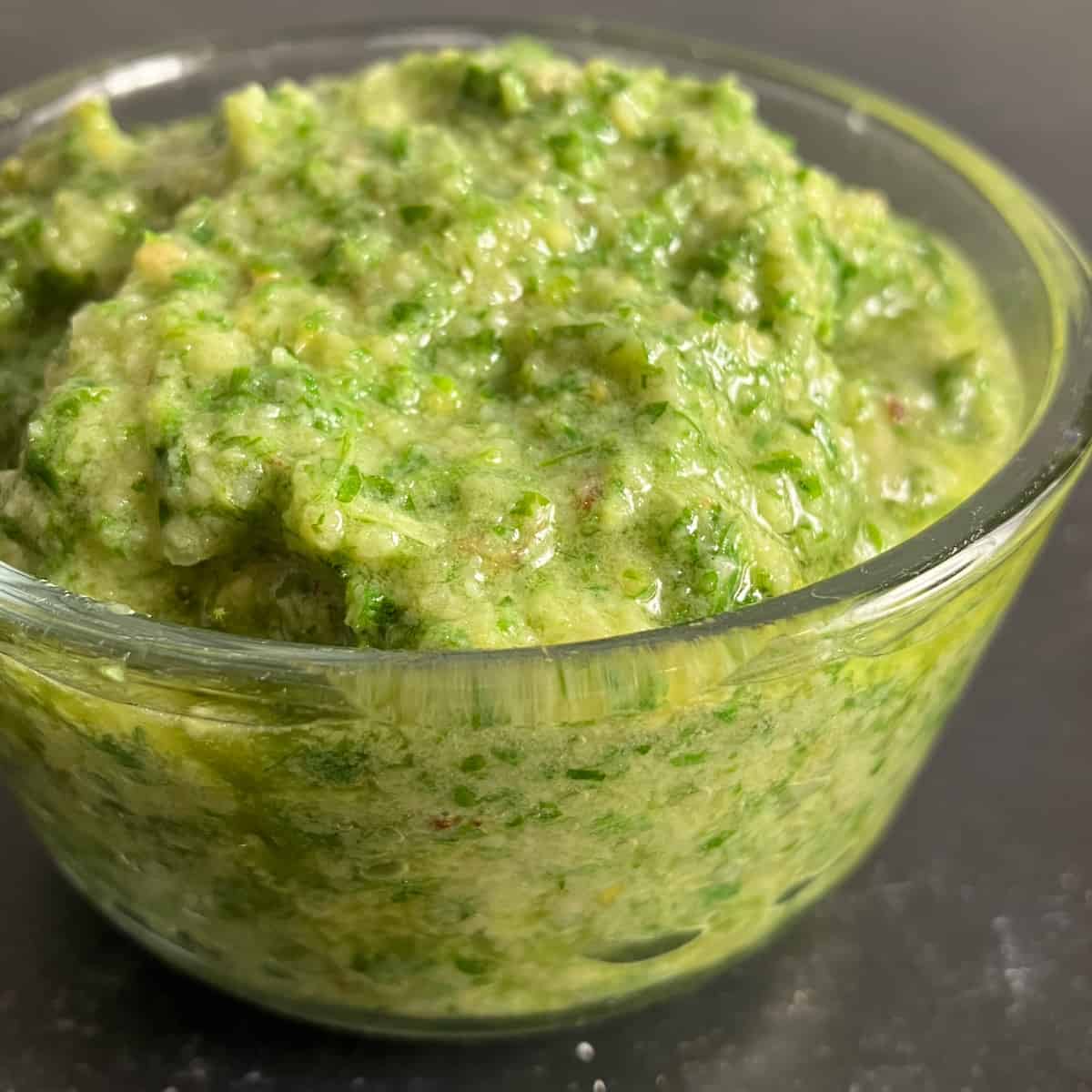
Table of Contents
🥕 Carrot Leaves Recipe
This carrot greens recipe for carrot top pesto is my answer to how to use carrot leaves. Here are the ingredients you need to make it:
- 2 cups carrot leaves, chopped small (remove thickest carrot stems; this is approximately the amount from one bunch of carrots)
- 2 cloves garlic, finely chopped
- ¼ cup pine nuts (walnuts can also be used)
- ½ cup extra virgin olive oil
- ¼ cup grated Parmesan cheese
- black pepper, to taste (or red pepper flakes for an added kick)
Get a printable recipe card lower in the post!
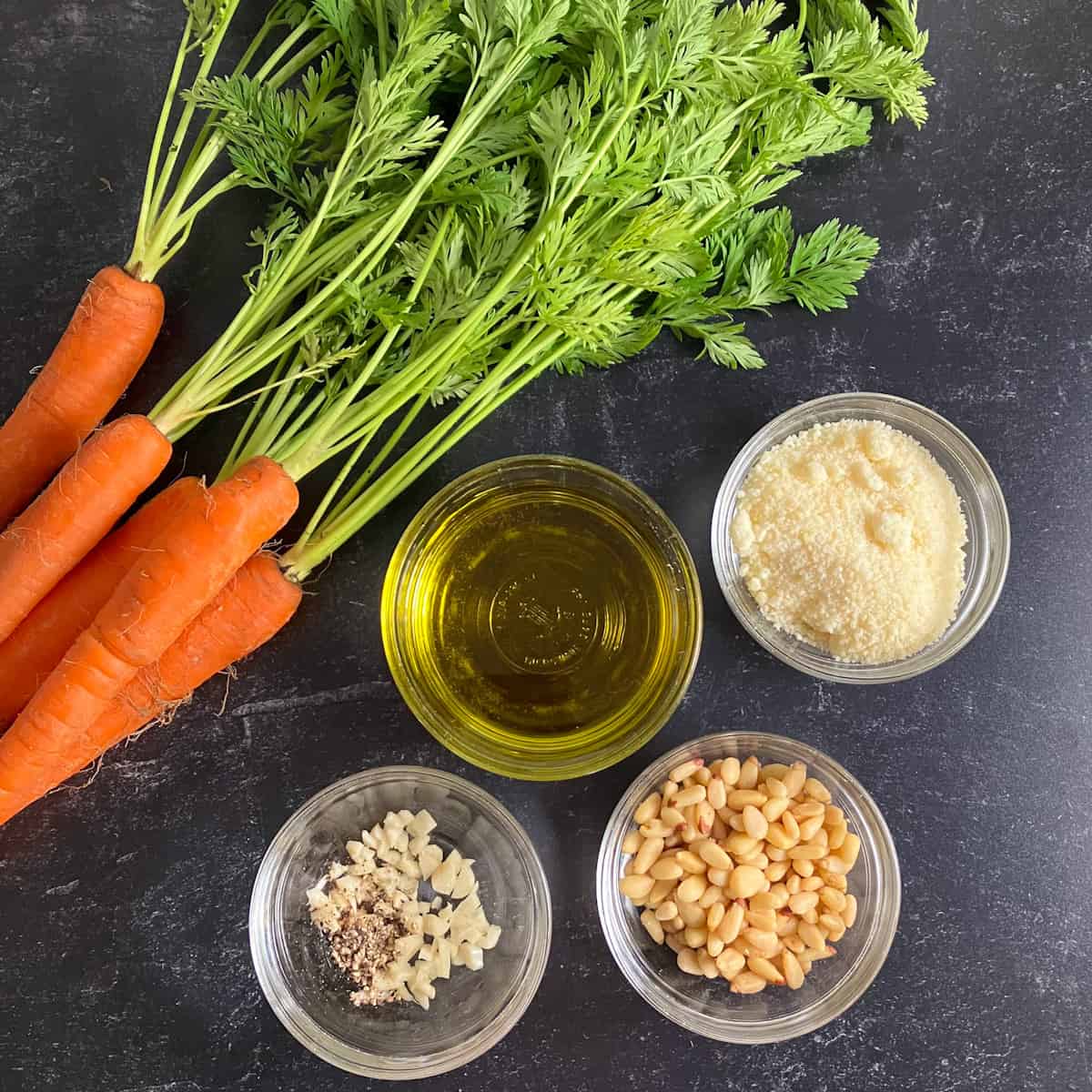
When you buy carrots with greens, try to use the fresh carrot greens right away. They are highly perishable and wilt easily.
Here are step-by-step instructions for how to prepare carrot tops:
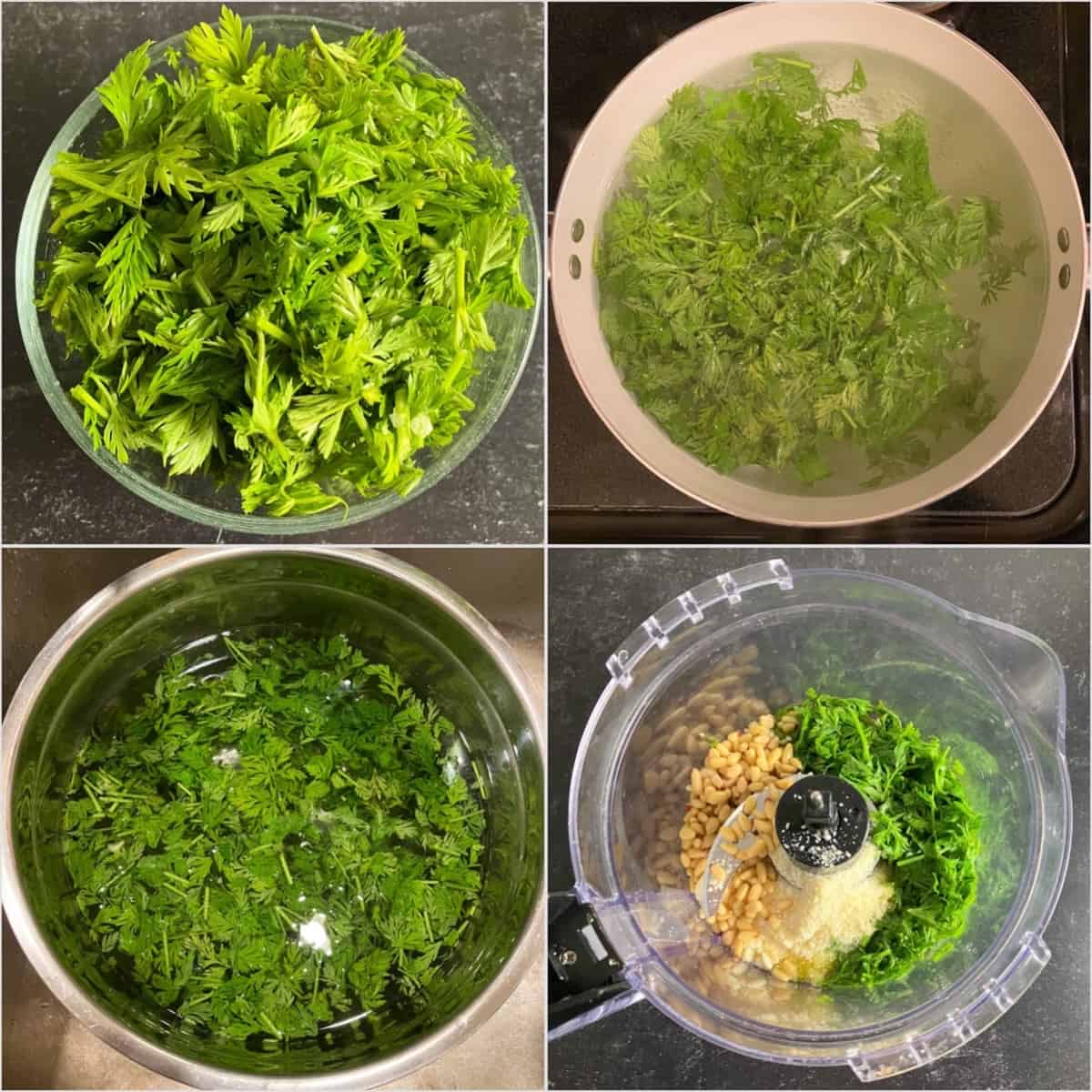
- Set a pot of water to boil. Prepare the carrot leaves by rinsing, chopping, and getting rid of tough stems. Once boiling, add the carrot leaves and let cook for 1-2 minutes.
- After the time is up, quickly drain the carrot leaves and plunge them into ice-cold water to stop the cooking process. Drain the carrot greens again and put the greens into a food processor. (This blanching process helps to remove some of the bitterness from the greens.)
- Add the rest of the ingredients to the food processor. Blend until the pesto achieves the desired texture. You may need to stop the processor and scrape down the sides with a spatula if food is sticking to the sides.
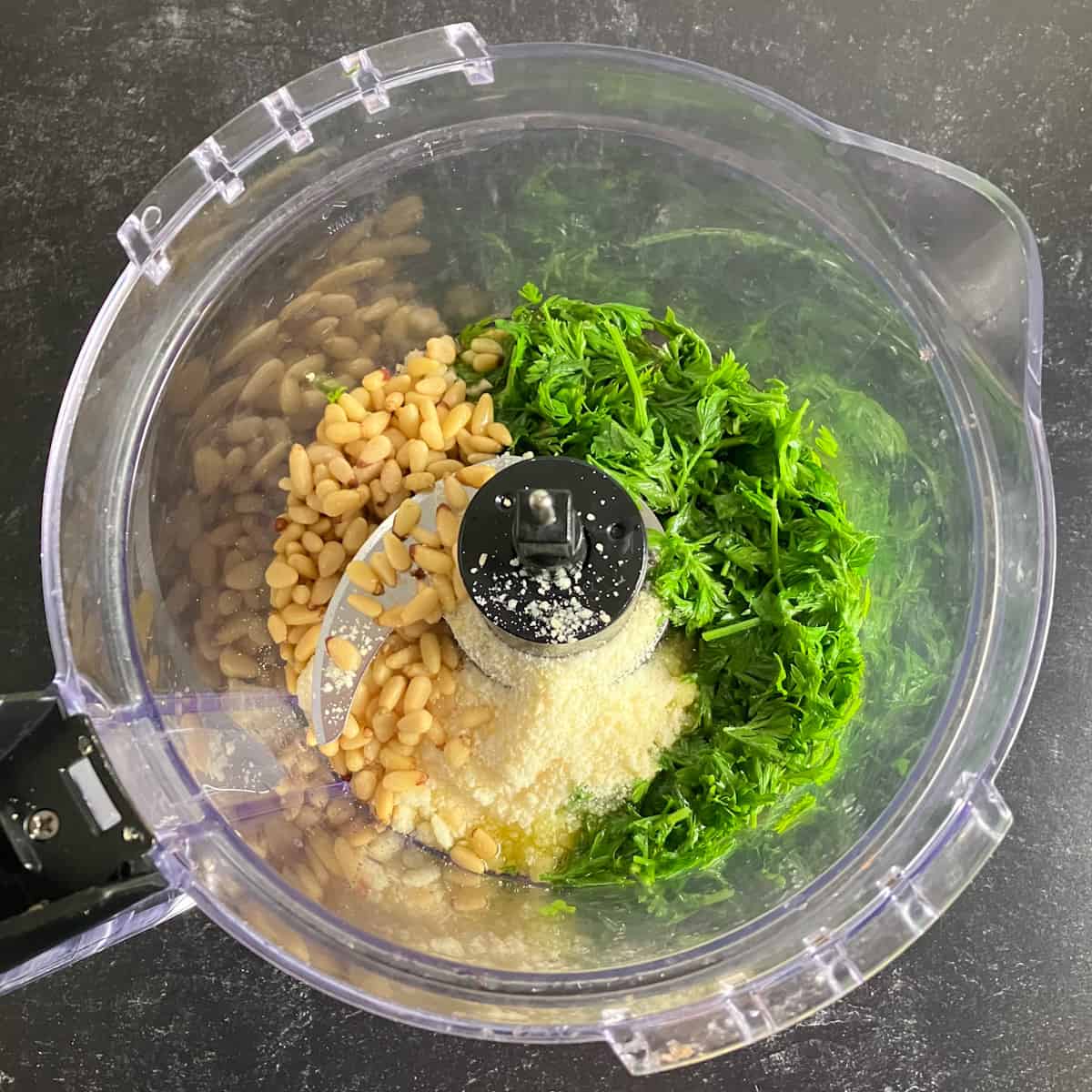
- Enjoy! Serve this flavorful carrot green pesto over pasta, and discover my favorite answer to how to eat carrot leaves!
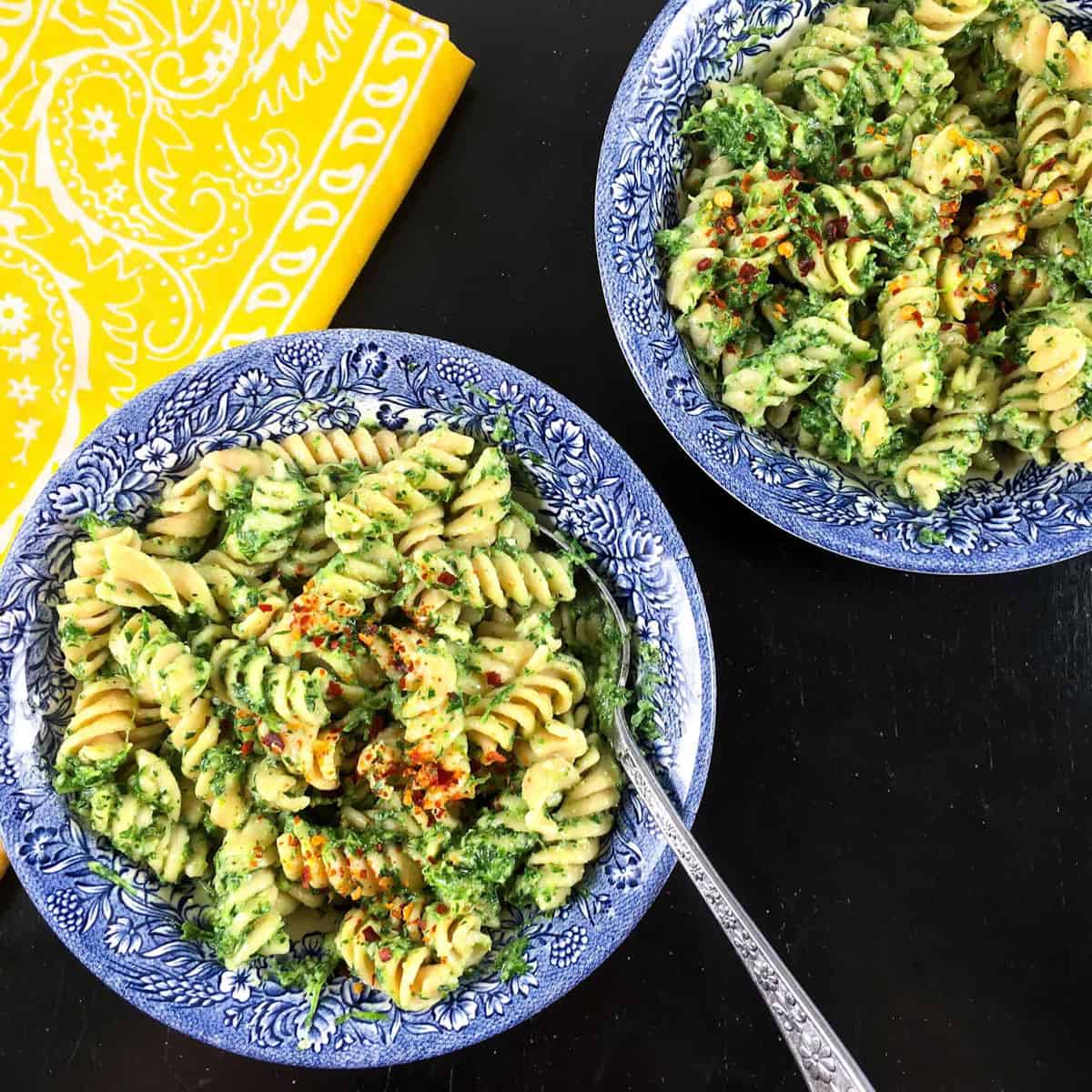
👨🍳 Other Carrot Leaves Recipes
Looking for more answers to what to do with carrot greens? Don’t miss these tasty carrot greens recipes:
- Carrot Greens in Soup
- Carrot Top Chimichurri Sauce (tasty vegan sauce or dip)
- Sauté Carrot Greens (simple directions for how to cook carrot greens)
- Carrot Greens Salad (a super side dish)
- Carrot Leaves Chutney (a delicious Indian carrot greens recipe with carrot fritters)
Carrot greens are also great used in vegetable stock, vegetable broth, or you can add them to a smoothie. The options for carrot top recipes are endless!
Have you ever eaten carrot tops? If so, what are some of your favorite ways to use them? Whether this is an old or new idea for you, I hope you love this carrot leaves recipe for pesto!
📖 Recipe Card
Watch How to Make It!
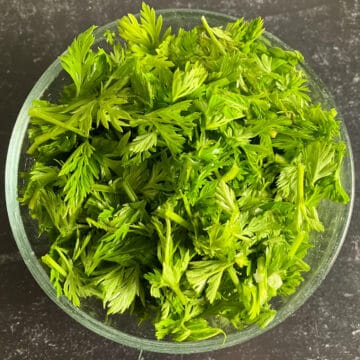
Carrot Leaves Recipe (What to do with Carrot Greens)
Ingredients
- 2 cups carrot leaves, chopped small (remove thickest stems; this is approximately the amount from one bunch of carrots)
- 2 cloves garlic, finely chopped
- ¼ cup pine nuts
- ½ cup olive oil
- ¼ cup grated Parmesan cheese
- black pepper, to taste
Instructions
- Set a pot of water to boil. Once boiling, add the carrot leaves and let cook for 1-2 minutes.
- After the time is up, quickly drain the carrot leaves and plunge them into ice-cold water to stop the cooking process. Drain the carrot greens again and put the greens into a food processor. (This blanching process helps to remove some of the bitterness from the greens.)
- Add the rest of the ingredients to the food processor. Blend until the pesto achieves the desired texture. You may need to stop the processor and scrape down the sides with a spatula if food is sticking to the sides.
- Enjoy! We were surprised at how much this tastes like basil pesto!
Equipment
Notes
💭 Expert Tips from Dietitian Summer Yule
This is a level 3 recipe (weight maintenance and active lifestyles). This recipe makes seven servings that are approximately 2 tablespoons each. Leftovers can be frozen in individual servings in an ice cube tray and then stored in freezer bags in the freezer. Pesto is a high-calorie condiment that has a lot of added oil in the form of olive oil. Because of this, I don’t consider it one of the best ways to flavor your food if you have a weight loss goal. It’s typically added to lower-protein dishes such as pasta, where it may not promote satiety. (Tip: try it on a legume-based pasta for additional protein or a gluten free option.) That said, pesto is packed with heart-healthy ingredients that are mainstays in the Mediterranean diet. Just because a food is high-calorie does necessarily mean it is less healthy! Adding this pesto to meals can be a great way to give your meal an energy boost if you need it. Nutrition information is for one serving.
nutrition info disclaimer
All recipes on this website may or may not be appropriate for you, depending on your medical needs and personal preferences. Consult with a registered dietitian or your physician if you need help determining the dietary pattern that may be best for you.
The nutrition information is an estimate provided as a courtesy. It will differ depending on the specific brands and ingredients that you use. Calorie information on food labels may be inaccurate, so please don't sweat the numbers too much.
"To taste" means to your preferences, which may have to be visual to follow food safety rules. Please don't eat undercooked food x
Nutrition
FAQs
What do carrot greens taste like?
Carrot greens have a slightly bitter and earthy taste, similar to other leafy greens like parsley or cilantro.
What are carrot leaves called?
Carrot leaves are commonly referred to as carrot tops or carrot greens.
Are carrot tops poisonous?
Carrot greens are not poisonous. The alkaloids that they contain can be found in other common edible plants, and are not toxic. That said, excessive consumption of carrot leaves can result in unpleasant GI side effects or allergic reactions in some individuals.
What are carrot leaves benefits?
Carrot leaves have certain benefits such as being a source of antioxidants (like vitamin C) and certain minerals. However, they are usually consumed in small quantities as an herb rather than a main vegetable.
Can I freeze carrot leaves?
Freezing carrot leaves is possible, but the texture may change after thawing. It's best to blanch them briefly before freezing to preserve their color and flavor.
Can you use carrot leaves instead of parsley?
Carrot leaves can be used as a substitute for parsley in some dishes, as they have a similar flavor profile. However, they may have a slightly stronger taste, so adjust the quantity accordingly.
Is it OK to juice carrot greens?
While it's technically possible to juice carrot greens, they are often not as commonly used for juicing as the carrot root. Moderation is key due to their potential bitter taste.
Can I dry carrot leaves?
Yes, you can dry carrot leaves. They can be dried by hanging them upside down in a well-ventilated area or using a food dehydrator. Once dried, they can be crushed and stored as a dried herb for later use in cooking or tea infusions.
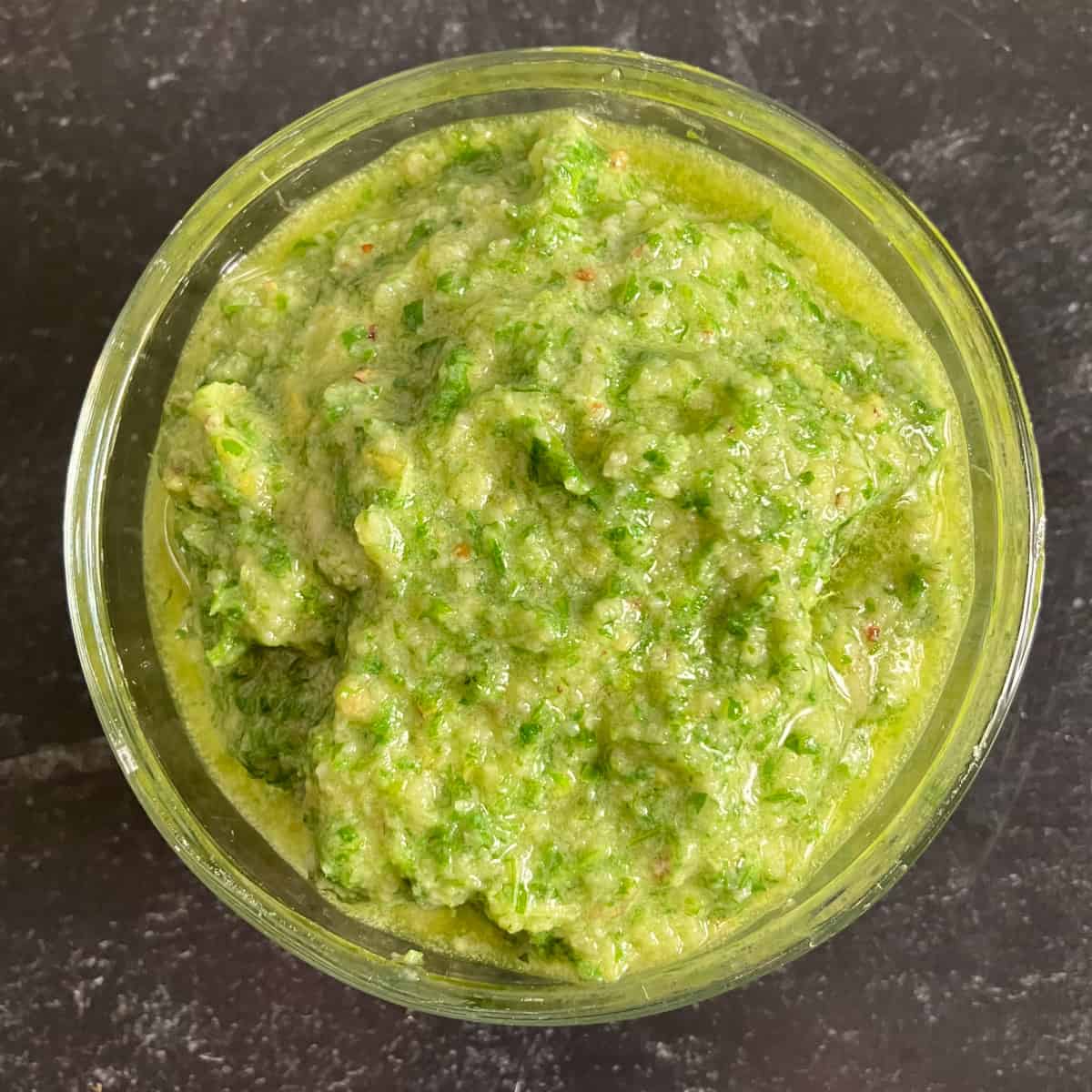
Join our community! Subscribe for all of the latest and greatest recipes, and follow me on Facebook, Pinterest, Instagram, and YouTube!

Hello! I'm Summer, a registered dietitian and home chef who loves to cook, eat, and create high quality content for you! Every recipe on this site has been tested by me to help ensure your success in the kitchen. All eaters are welcome here 🙂


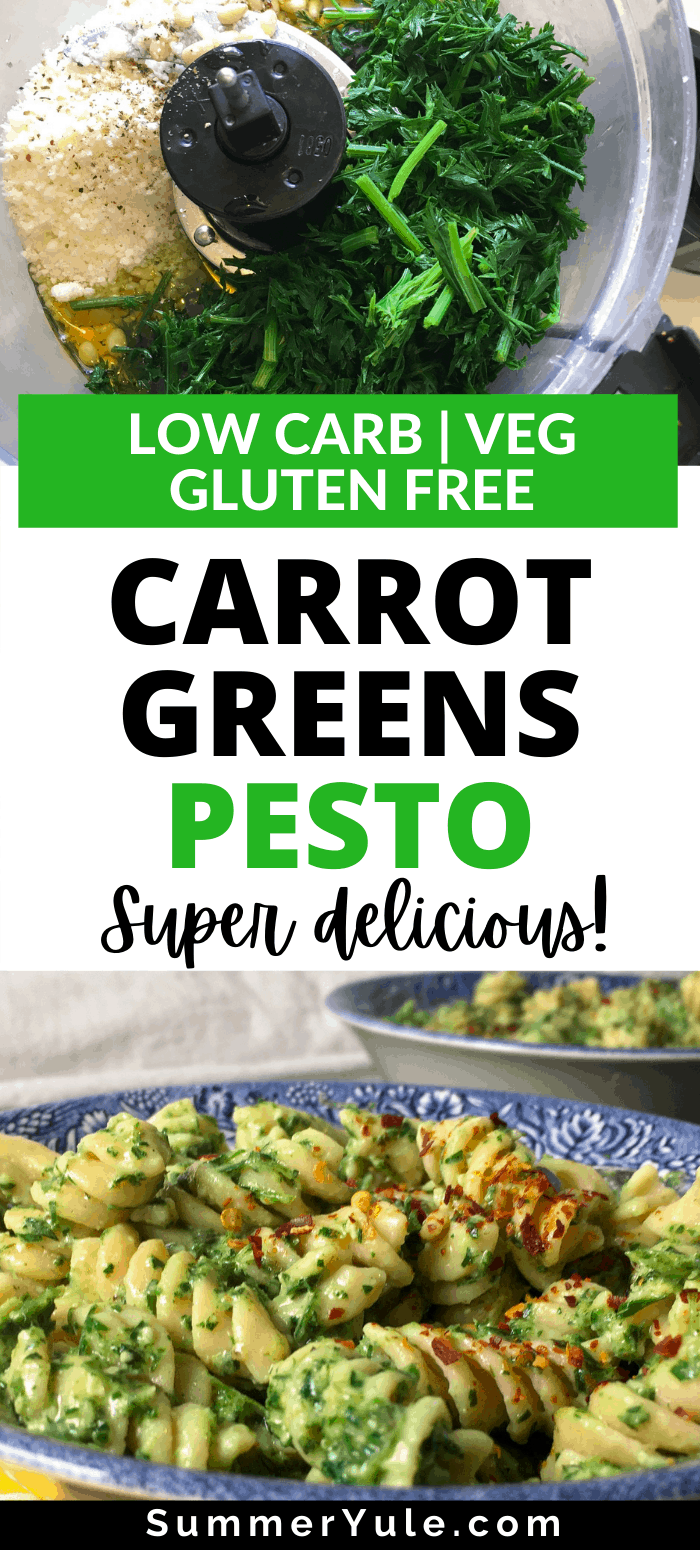
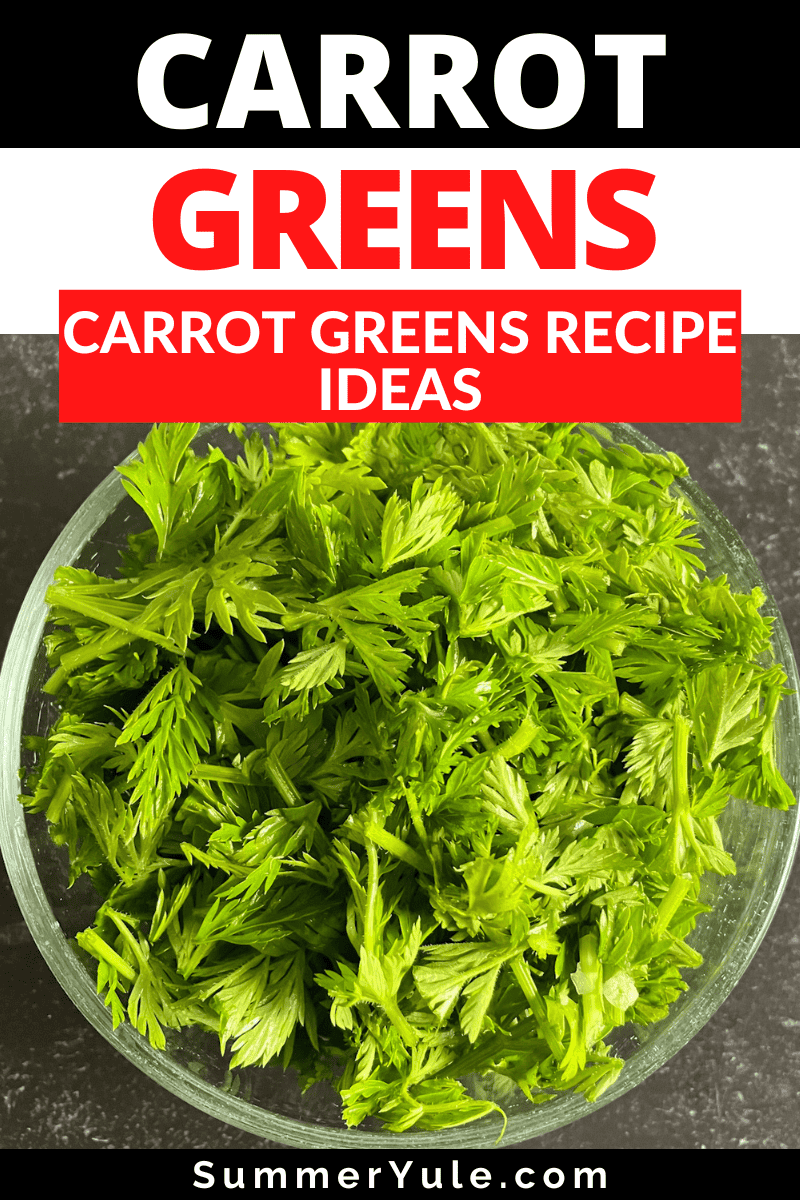
Barb says
Hello All,
Our garden was very abundant this year and I preserved all that I could. I made a huge batch of Carrot Pesto using your recipe and then froze it in 1/4 pint jars. We are loving this pesto!!! It really does taste a lot like basil pesto. It froze very well. I'm looking forward to trying more of your recipes.
Happy Carrot Tops!
Barb
Summer Yule says
Hi Barb, so happy to hear that and lucky you with the abundant garden! Thank you so much for your feedback, I really appreciate it 🙂 Summer